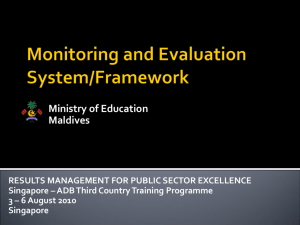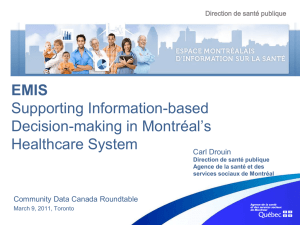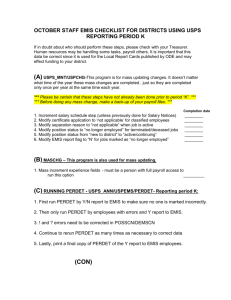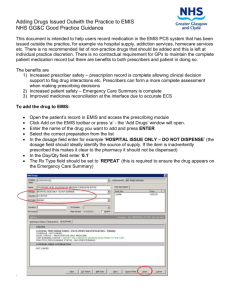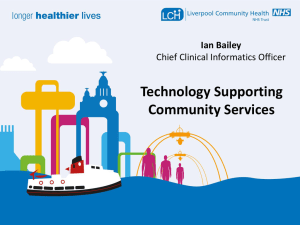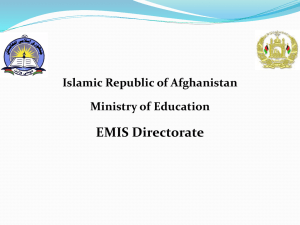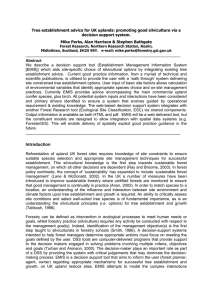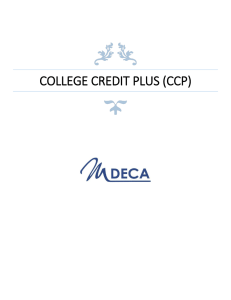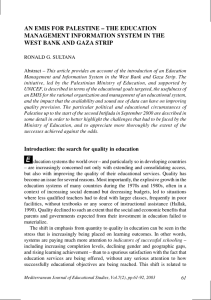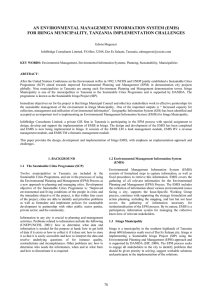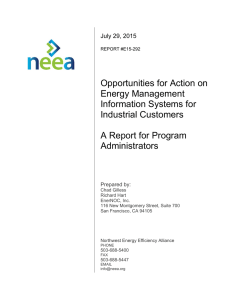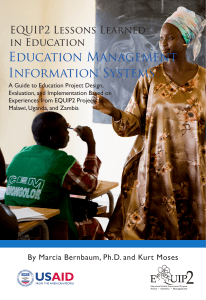POLICY BRIEF Information Use and Decentralized Education
advertisement
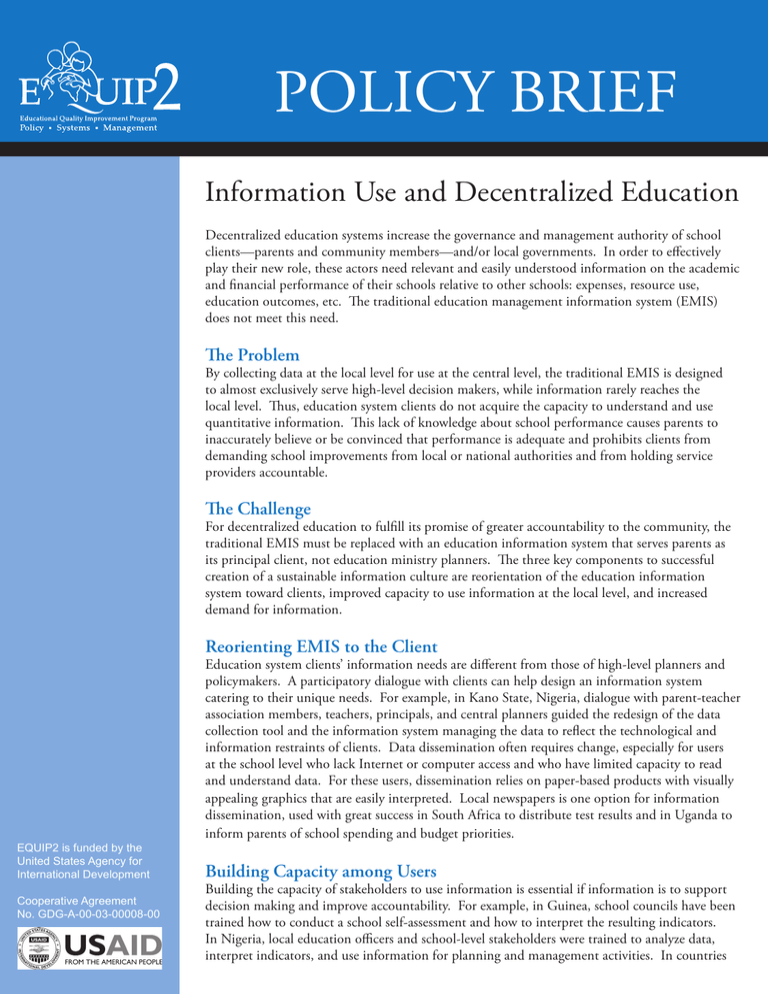
POLICY BRIEF Information Use and Decentralized Education Decentralized education systems increase the governance and management authority of school clients—parents and community members—and/or local governments. In order to effectively play their new role, these actors need relevant and easily understood information on the academic and financial performance of their schools relative to other schools: expenses, resource use, education outcomes, etc. The traditional education management information system (EMIS) does not meet this need. The Problem By collecting data at the local level for use at the central level, the traditional EMIS is designed to almost exclusively serve high-level decision makers, while information rarely reaches the local level. Thus, education system clients do not acquire the capacity to understand and use quantitative information. This lack of knowledge about school performance causes parents to inaccurately believe or be convinced that performance is adequate and prohibits clients from demanding school improvements from local or national authorities and from holding service providers accountable. The Challenge For decentralized education to fulfill its promise of greater accountability to the community, the traditional EMIS must be replaced with an education information system that serves parents as its principal client, not education ministry planners. The three key components to successful creation of a sustainable information culture are reorientation of the education information system toward clients, improved capacity to use information at the local level, and increased demand for information. Reorienting EMIS to the Client EQUIP2 is funded by the United States Agency for International Development Cooperative Agreement No. GDG-A-00-03-00008-00 Education system clients’ information needs are different from those of high-level planners and policymakers. A participatory dialogue with clients can help design an information system catering to their unique needs. For example, in Kano State, Nigeria, dialogue with parent-teacher association members, teachers, principals, and central planners guided the redesign of the data collection tool and the information system managing the data to reflect the technological and information restraints of clients. Data dissemination often requires change, especially for users at the school level who lack Internet or computer access and who have limited capacity to read and understand data. For these users, dissemination relies on paper-based products with visually appealing graphics that are easily interpreted. Local newspapers is one option for information dissemination, used with great success in South Africa to distribute test results and in Uganda to inform parents of school spending and budget priorities. Building Capacity among Users Building the capacity of stakeholders to use information is essential if information is to support decision making and improve accountability. For example, in Guinea, school councils have been trained how to conduct a school self-assessment and how to interpret the resulting indicators. In Nigeria, local education officers and school-level stakeholders were trained to analyze data, interpret indicators, and use information for planning and management activities. In countries Information Use and Decentralized Education such as Ghana and Guinea, where the responsibility for managing the information system is being decentralized to local governments, local planning officials require training in basic computer skills and data analysis techniques. Raising the Demand for Information Numerous donor-funded efforts to build EMIS have not been sustained once donor funding ended. These efforts have failed largely due to the lack of long-term information demand by users. The construction of client-oriented EMIS runs the same risk as construction of traditional EMIS—simply supplying information will fail in the absence of efforts to increase information demand. EMIS must build on the underlying interests and goals of each stakeholder group. Demand for information can also be increased by building a collective stakeholder commitment to improve schools and hold service providers accountable for resource allocation decisions. In Nigeria, parents, school staff, local education leaders, and elected community leaders have participated in workshops to help define goals and priorities using comparative school data, resulting in increased demand for and use of school-level information. Acknowledgements This paper was written for EQUIP2 by Donald R. Winkler and Jon Herstein (Research Triangle Institute International), 2005. EQUIP2: Educational Policy, Systems Development, and Management is one of three USAIDfunded Leader with Associate Cooperative Agreements under the umbrella heading Educational Quality Improvement Program (EQUIP). As a Leader with Associates mechanism, EQUIP2 accommodates buy-in awards from USAID bureaus and missions to support the goal of building educational quality in the national, sub-national, and cross-community levels. The Academy for Educational Development (AED) is the lead organization for the global EQUIP2 partnership of education and development organizations, universities, and research institutions. The partnership includes fifteen major organizations and an expanding network of regional and national associates throughout the world: Aga Khan Foundation, American Institutes for Research, CARE, Center for Collaboration and the Future of Schooling, East-West Center, Education Development Center, International Rescue Committee, Joseph P. Kennedy, Jr. Foundation, Michigan State University, Mississippi Consortium for International Development, ORC Macro, Research Triangle Institute, University of Minnesota, University of Pittsburgh Institute of International Studies in Education, Women’s Commission for Refugee Women and Children. For more information about EQUIP2, please contact: USAID Patrick Collins CTO EGAT/ED USAID Washington 1300 Pennsylvania Ave., NW Washington, DC 20532 Tel: 202-712-4151 Email: pcollins@usaid.gov AED John Gillies EQUIP2 Project Director 1825 Connecticut Ave., NW Washington, DC 20009 Tel: 202-884-8256 Email: equip2@aed.org Web: www.equip123.net
